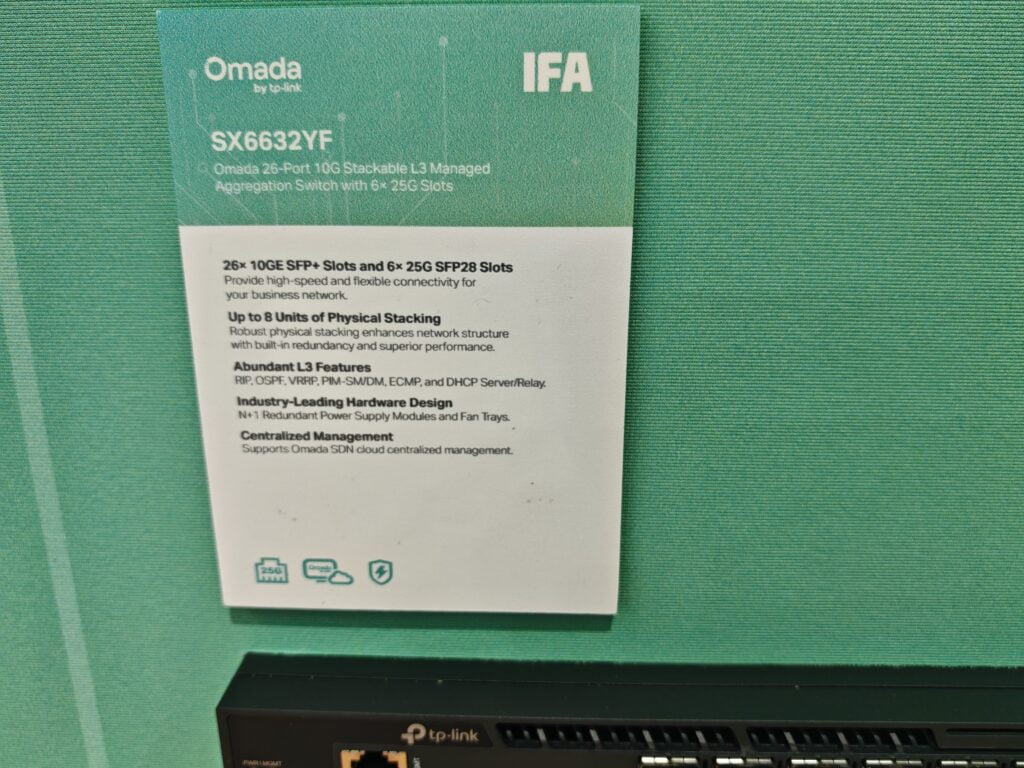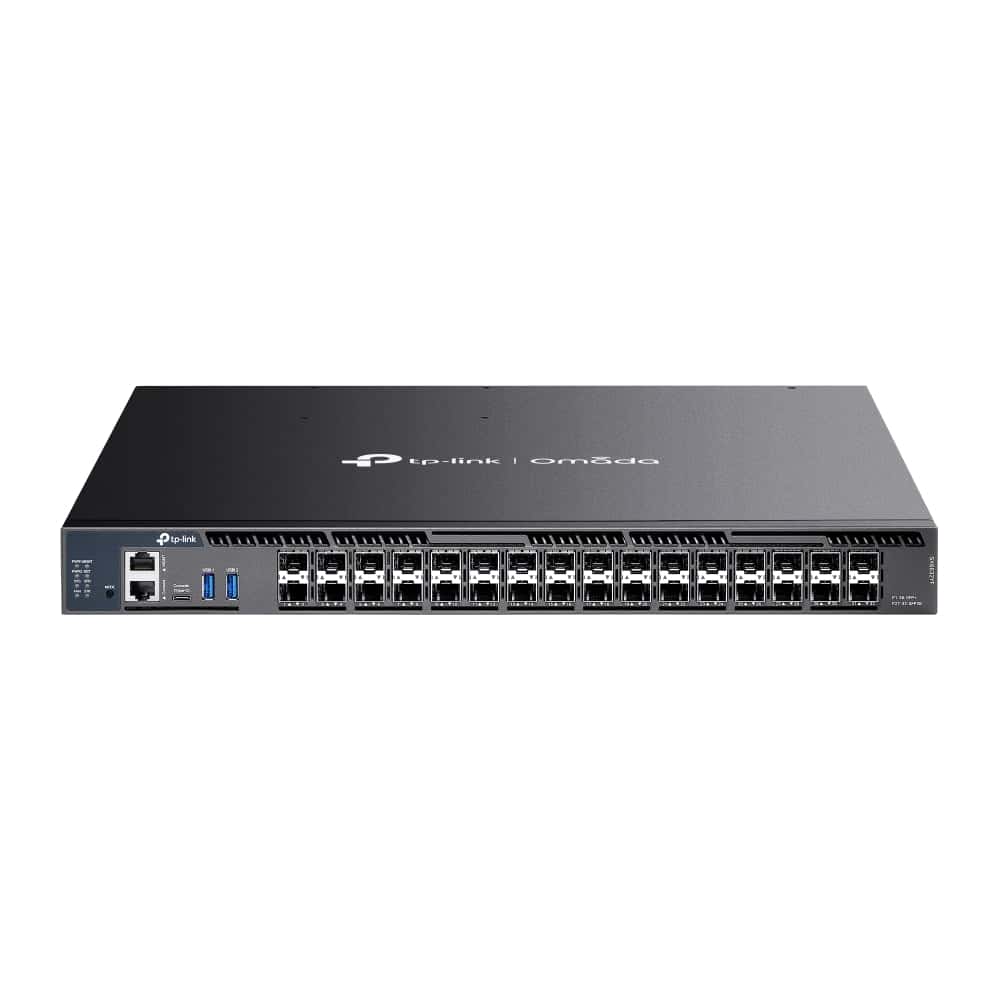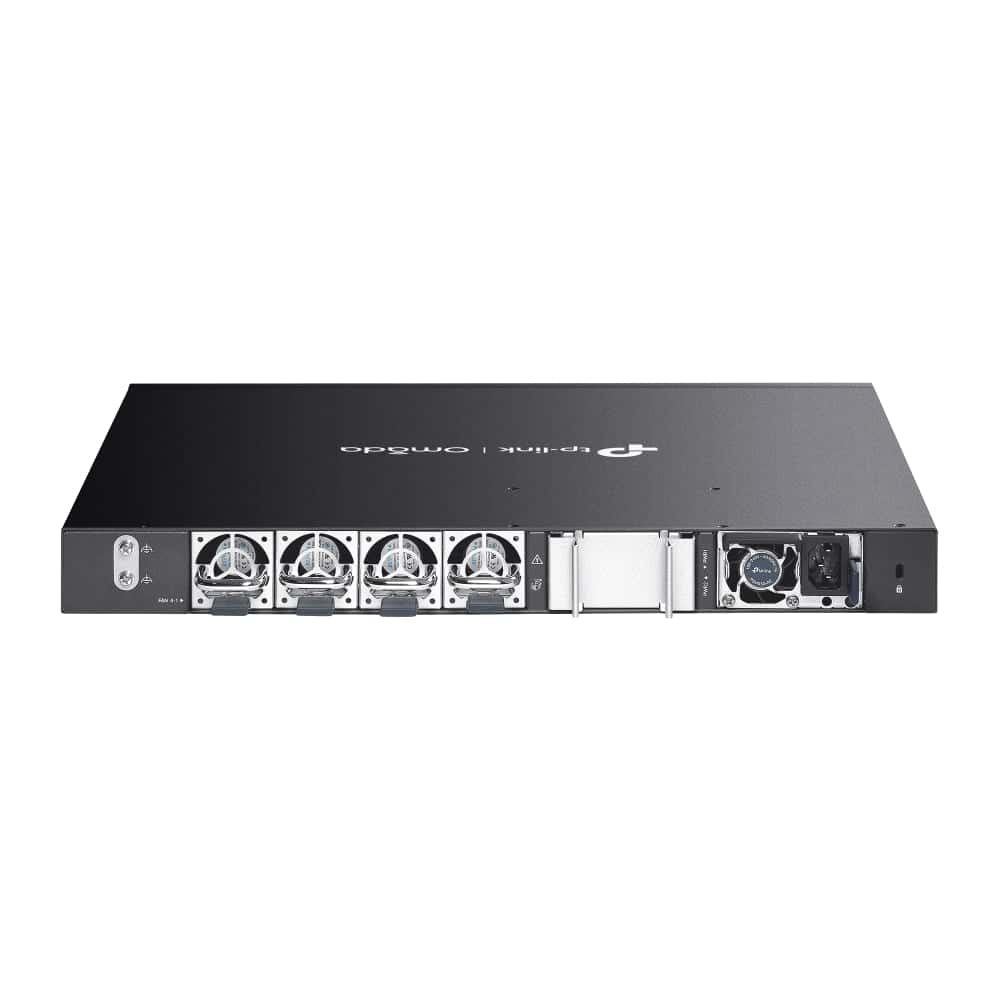Any links to online stores should be assumed to be affiliates. The company or PR agency provides all or most review samples. They have no control over my content, and I provide my honest opinion.
At IFA 2024, TP-Link displayed its latest addition to the Omada networking ecosystem with some impressively high-specced multi-gig options.
One of the models on display hasn’t appeared to have been announced yet.
Related Content
- Unifi Cloud Gateway Max Review – UCG-Max-NS
- Ubiquiti Unifi U7 Pro WiFi 7 Access Point Review
- Ubiquiti UniFi 6 Long Range Review
- Zyxel XMG1915-10EP Review: 2.5GbE POE Cloud Managed Layer 2 Switch
- EnGenius ESG510 Review – Cloud Managed Dual SD-WAN Gateway [Gateway5 4mG]
TP-Link Omada SX3832MPP 10GbE PoE++ Switch
- Ports:
- 24 x 10G PoE++ Ports for Wi-Fi 6/7
- Supports up to 10 Gbps speed.
- Designed for connectivity with Wi-Fi 6/7 access points (APs) and 10G NAS/Servers.
- 8 x 10G SFP+ Uplinks
- Provides 10 Gbps uplink slots for high-bandwidth connectivity.
- Power:
- 750W PoE Budget:
- Total of 750W PoE power available.
- Up to 90W PoE output per port.
- Ideal for connecting high-power Wi-Fi 6/7 APs.
- Features:
- Layer 2 and Layer 2+ Features:
- Includes Static Routing, DHCP Server/Relay, ARP Proxy, IGMP Snooping, and VLAN.
- Centralized Management:
- Supports Omada SDN cloud centralized management for ease of network control.

I can’t find any reference to the Omada SX3832MPP, which looks like one of the best options available for 10GbE networking from any cloud-managed networking brands, including Ubuiqiti, Netgear, and Zyxel.
- Multi-Gigabit PoE++ Connectivity: The switch boasts 24 10G PoE++ ports, enabling support for the latest Wi-Fi 6 and 7 access points while breaking through the gigabit barrier. This allows for full utilisation of high-performance network devices and 10G NAS servers.
- High-Speed Uplinks: With 8 dedicated 10G SFP+ slots, the SX3832MPP offers lightning-fast uplink options, ensuring non-blocking switching capacity for demanding network topologies.
- Robust PoE Budget: The switch features a substantial 750W PoE budget, with the capability to deliver up to 90W per PoE++ port. This makes it ideal for powering a wide array of PoE devices, particularly suited for large-scale Wi-Fi 7 deployments.
- Advanced L2 and L2+ Features: TP-Link has equipped the SX3832MPP with a comprehensive set of Layer 2 and Layer 2+ features, including static routing, DHCP server/relay, ARP proxy, IGMP snooping, and VLAN support, catering to diverse network management needs.
- Centralised Management: The switch integrates seamlessly with Omada SDN, allowing for cloud-based centralised management, which simplifies network administration for IT professionals.
I suppose it would have been nice if the switch was a fully-fledged L3 switch, but I doubt most small businesses or prosumers need that. Additionally, a couple of 25GE SFP28 ports would have been nice for stacking, but that’s also a quite advanced feature.
New TP-Link Models Officially Announced
The following models are all listed on the TP-Link Business Networking site.
TP-Link Omada SX6632YF

- 26× 10G SFP+ slots and 6× 25G SFP28 slots
- 820 Gbps switching capacity
- Physical Stacking for built-in redundancy and performance
- L3 features: RIP, OSPF, ECMP, VRRP, PIM-DM, DHCP Server/Relay
- Security Strategies: ACL, Port Security, DoS Defend, 802.1X
- Highly Available with two field-replaceable power supplies, VRRP, and ERPS
- Centralized cloud management via the Omada SDN controller
- Standalone management via web, CLI, SNMP, and RMON

The Omada SX6632YF switch boasts a substantial switching capacity of 400Gbps, ensuring smooth data flow even in high-traffic scenarios.
The SX6632YF is equipped with a comprehensive suite of Layer 3 routing protocols, designed to support scalable network architectures. These protocols include:
- Static Routing
- RIP (Routing Information Protocol)
- OSPF (Open Shortest Path First)
- ECMP (Equal-Cost Multi-Path routing)
- VRRP (Virtual Router Redundancy Protocol)
- DHCP Server and DHCP Relay capabilities
Additionally, the switch supports PIM-DM (Protocol Independent Multicast – Dense Mode) and PIM-SM (Protocol Independent Multicast – Sparse Mode) multicast routing protocols. These features ensure efficient routing for multicast groups, which is particularly beneficial for applications such as video streaming or real-time data distribution across large networks.
This robust set of routing capabilities allows network administrators to design and implement complex, high-performance network topologies that can easily adapt to changing business requirements.


TP-Link Omada SG3428XPP-M2
- 8× 2.5G PoE++ ports (up to 60 W PoE out per port)
- 16× 2.5G PoE+ ports (up to 30 W PoE out per port)
- 4× 10G SFP+ slots
- 500 W total PoE budget
- Centralised cloud management via the web or the Omada app
- Standalone management via web, CLI, SNMP, and RMON
- Static Routing helps route internal traffic for higher efficiency
- VLAN, ACL, QoS, IGMP Snooping, OAM, and DDM
- ERPS supports rapid protection and recovery in a ring topology
The SG3428XPP-M2 boasts 24 2.5G PoE++ ports, providing ample connectivity options for power-hungry devices such as Wi-Fi 6E/7 access points and high-resolution security cameras.
Price and Availability
There is no word on how much these new switches will cost or when they will be available.
For context, the TP-Link TL-SG3452XP 48-Port L2+ Managed GbE PoE+ is currently available for £710, and the TP-Link TL-SX3206HPP 4-Port Managed 10GbE PoE++ Access Switch is £565.
The flagship 24-port switch from Ubiquiti is either the Enterprise 24 PoE for £766.80 with:
- (12) 2.5 GbE
- (12) GbE; all PoE+ ports
- (2) 10G SFP+ ports
Or the Pro Max 24 PoE which is the same price but has:
- (8) 2.5 GbE PoE++ ports
- (16) GbE ports, including (8) PoE+ and (8) PoE++
- (2) 10G SFP+ ports
I am James, a UK-based tech enthusiast and the Editor and Owner of Mighty Gadget, which I’ve proudly run since 2007. Passionate about all things technology, my expertise spans from computers and networking to mobile, wearables, and smart home devices.
As a fitness fanatic who loves running and cycling, I also have a keen interest in fitness-related technology, and I take every opportunity to cover this niche on my blog. My diverse interests allow me to bring a unique perspective to tech blogging, merging lifestyle, fitness, and the latest tech trends.
In my academic pursuits, I earned a BSc in Information Systems Design from UCLAN, before advancing my learning with a Master’s Degree in Computing. This advanced study also included Cisco CCNA accreditation, further demonstrating my commitment to understanding and staying ahead of the technology curve.
I’m proud to share that Vuelio has consistently ranked Mighty Gadget as one of the top technology blogs in the UK. With my dedication to technology and drive to share my insights, I aim to continue providing my readers with engaging and informative content.







